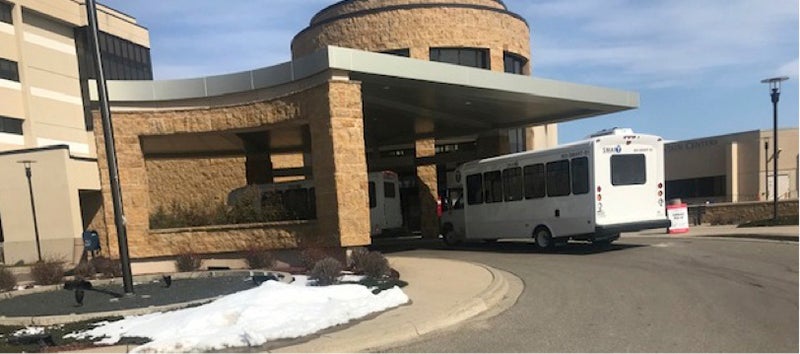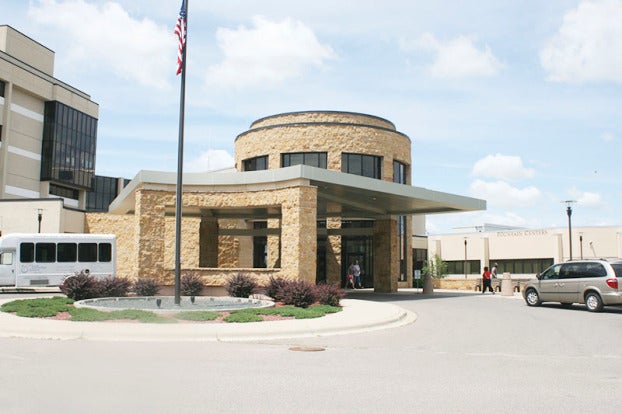Daily COVID-19 update: Deaths delivering a grim December; Freeborn County active cases declining
Published 11:56 am Saturday, December 12, 2020
|
Getting your Trinity Audio player ready...
|
Minnesota health officials reported 67 more COVID-19 deaths on Saturday, pushing the December death toll from the disease to 766.
The state’s COVID-19 death toll so far this month remains sad and stunning, even as the number of new cases and hospitalizations reported each day trend downward.
Saturday’s toll follows the 94 deaths reported on Friday, the second highest single-day count in the pandemic.
Averaged over the past week, the number of COVID-19 deaths reported each day in Minnesota is now about 63, down slightly from the previous day’s record high of nearly 64.
Here are Minnesota’s current COVID-19 statistics:
- 4,359 deaths (67 new)
- 375,398 positive cases (4,447 newly reported); 335,258 off isolation (about 89 percent)
- 4.8 million tests, 2.7 million people tested (about 48 percent of the population)
- 9 percent seven-day positive test rate (officials find 5 percent or more concerning)
The average number of new cases reported each day over the past week is about 4,321 — the lowest that number has been in more than a month. The average number of new COVID-related hospital admissions each day over the past week dropped below 200 on Saturday — the first time that’s happened since Nov. 11.
South-central Minnesota statistics:
Freeborn County reported 12 new lab-confirmed cases and two probable cases, increasing its cumulative total to 1,773. Of that number, 130 are considered active cases, according to the Freeborn County Public Health Department.
No new hospitalizations were reported Saturday, and 84 people have been hospitalized at some point during their illness.
The new cases included the following:
• One person between 0 and 4
• Two people in their 20s
• Two people in their 40s
• Three people in their 50s
• Four people in their 60s
• Two people in their 70s
Faribault County reported 12 new lab-confirmed cases and has had 740 cumulative cases; Mower County reported 36 new lab-confirmed cases and has had 3,060 total cases; Steele County reported 17 new lab-confirmed cases and one new death and has had 2,325 total cases; and Waseca County reported 21 new lab-confirmed cases and has had 1,551 total cases.
‘Still at a very vulnerable place’
Minnesota officials continue to anticipate a wave of COVID-19 cases and hospitalizations originating from Thanksgiving holiday celebrations.
It hasn’t happened yet, though. Because of that, health leaders are somewhat hopeful that many families heeded public pleas to not gather in big groups for Thanksgiving, and so the worst-case scenarios of a post-holiday surge might not materialize.
Gov. Tim Walz echoed that hope on Friday, noting the slowing case counts as well as a recent decline in positive test rates, a key metric in judging the spread of the disease.
Health Commissioner Jan Malcolm urged caution, though, saying it was still too soon to judge whether a Thanksgiving surge was coming. While the state’s caseloads have eased, “we are still at a very vulnerable place,” she told reporters.
Walz must still decide soon whether to extend the state’s current monthlong ban on in-person bar and restaurant service, which is set to run through Dec. 18.
While a decision had been expected Monday, a Walz spokesperson said Friday that the governor has now pushed it back until Wednesday because he wants the most up-to-date data before deciding.
COVID-19 now tied to 1 in 3 Minnesota deaths
The newest numbers put Minnesota’s total of confirmed or probable cases at more than 375,000 to date. In about 89 percent of those cases, people have recovered to the point where they no longer need to be isolated.
The deaths reported Saturday raised Minnesota’s count to 4,359. Among those who’ve died, about two-thirds had been living in long-term care or assisted living facilities; most had underlying health problems.
Minnesota’s daily death counts from COVID-19 have been especially hard to handle. More than 1,800 deaths have been reported since Nov. 1. That’s about 43 percent of all the deaths so far in the pandemic, recorded in the past six weeks.
It’s now killing Minnesotans at a rate far higher than any recent flu season. Roughly one-third of all recent deaths in Minnesota are tied to COVID-19.
In the past few years, respiratory illnesses have been a major contributing factor in about 5 to 10 percent of all deaths in Minnesota, depending on the time of year.
They accounted for around 20 percent of deaths during the state’s May COVID-19 wave.
Now it’s even higher: nearly 40 percent of all deaths in Minnesota in recent weeks have been attributed to a respiratory illness such as COVID-19, influenza or pneumonia.
Caseloads spread across age groups
People in their 20s still make up the age bracket with the state’s largest number of confirmed cases — more than 72,000 since the pandemic began, including more than 38,500 among people ages 20 to 24.
The number of high school-age children confirmed with the disease has also grown, with more than 29,000 total cases among children ages 15 to 19 since the pandemic began.
Although less likely to feel the worst effects of the disease and end up hospitalized, experts worry youth and young adults will spread it to grandparents and other vulnerable populations.
It’s especially concerning because people can have the coronavirus and spread COVID-19 when they don’t have symptoms.
New caseloads ebb in rural Minnesota
Central and western Minnesota drove much of the increase in new cases over the past five weeks, while Hennepin and Ramsey counties showed some of the slowest case growth in the state.
After a spike in confirmed cases through much of November, all regions of the state have seen new case numbers plateau or start to fall.
Hot spots continues to pop up in rural counties relative to their population.
Latino cases climb
In Minnesota and across the country, COVID-19 has hit communities of color disproportionately hard in both cases and deaths. That’s been especially true for Minnesotans of Hispanic descent for much of the pandemic.
Distrust of the government, together with deeply rooted health and economic disparities, have hampered efforts to boost testing among communities of color, officials say, especially among unauthorized immigrants who fear their personal information may be used to deport them.
Similar trends have been seen among Minnesota’s Indigenous residents. Counts among Indigenous people jumped in October relative to population.
Officials continue to plead with Minnesotans to wear masks in public gathering spaces, socially distance, stay home if they don’t feel well and otherwise stay vigilant against the spread of COVID-19.
‘A problem for all of us’
State health officials on Thursday noted that several of the newly reported deaths included people in their 20s, 40s and 50s, emphasizing the disease isn’t simply focused on the very old.
“This is not just a problem for the elderly, for our fellow Minnesotans who have medical conditions. It is a problem for all of us,” state epidemiologist Dr. Ruth Lynfield told reporters.
“Until we have safe and effective vaccines, we really need to do everything we can to stop transmission between fellow Minnesotans,” she added. “We know this is hard. It is taking a big toll on so many areas of our lives. But we have to hang in there and we have to do the best we can.”






